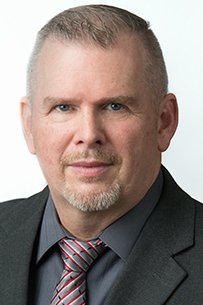Keith Bowman will join San Francisco State University in July as dean of the College of Science & Engineering.
Bowman will come to the university from the Illinois Institute of Technology, where he is chair of mechanical, materials and aerospace engineering, the engineering college's largest department. During his four years at IIT, he oversaw the implementation of new curricula as full-time undergraduate enrollment and graduate credit hours both surged 40 percent.
Bowman also spent 23 years at Purdue University, where he ultimately was head of the School of Materials Engineering.
He was a member of IIT's diversity committee and was the first advisor to the National Organization of Gay and Lesbian Scientific and Technical Professionals at Purdue.
At San Francisco State, Bowman will replace Sheldon Axler, who has been dean since 2002, and will oversee a college that consists of more than 6,000 students and 400 faculty and staff. S.F. State's science and engineering college has nine departments, ranging from biology and chemistry to computer science and engineering.
Bowman took some time to answer questions from the San Francisco Business Times:
What excited you about this job?
I've been the department chair in two engineering colleges at two universities, and I had the opportunity to work outside the colleges and broadly across the universities in math and science education. Most of those things exist within this college.
I come from a materials science background, and that's here, and it overlaps with geology as well. They're all inside this college.
There are some pretty good engineering schools around here — Stanford and UC Berkeley — and UCSF has a bioengineering program, for example. How do you get San Francisco State to be top of mind for science and engineering students?
It's amazing — I learned in preparing to interview (for the job) that there's a lot of great work (at S.F. State). There's a lot of great people. The thing that I learned is how many different people I know — friends, relatives, neighbors — have degrees from San Francisco State.
There may be a light shone on other things — maybe it's related to the fog — and maybe a lot of people don't know as much as they should know about science and engineering at San Francisco State.
That's an important task for the position I'm taking, to make sure people know how good we are and what we're able to do.
STEM — science, technology, engineering math — education is a big part of your history. Everyone talks about it, but what's the key to getting some results?
Everyone is talking about it. One of the interesting things about science and engineering is we don't just teach people who get science and math degrees but people who get degrees in other fields, so they understand and are enabled to be successful.
From a colleague at IIT, I learned how many engineers and computer science and math graduates Goldman Sachs hires. There's a bunch of them. They hire a lot of them for their own infrastructure, but you also need people to run the operations on the business side and people who put in the creativity piece.
But the best STEM education today isn't going to have tangible results for another 10-15 years, right?
Obviously it takes time to have any type of change take place in education. Last year or this year, we reached 100,000 bachelor degrees in engineering. That's not a high percentage of bachelor degrees; a lot of people are getting degrees in other things.
There's a lot of interest in driving and encouraging students, parents and communities toward careers associated with STEM, but we need all the other careers (too) and we need to make sure they have a strong backing in STEM to move this country forward.
So how do you keep funders — taxpayers, politicians — focused on the long-term goal?
One project I was involved in at Purdue introduced engineering design as a way to teach science at the elementary-school level.
When you do that, you have to teach elementary-school teachers something about engineering. It's interesting watching teachers who never thought about learning much about engineering design now having to apply the math and science and teach principles of engineering design to elementary school students.
We had the chance to connect some teachers with industry, to know the factory down the street or the design center, and it was interesting to see that they hadn't thought much (about the connection).
Sustaining (programs) is always difficult. It's easy to move on to the next easy thing to talk about. It will take universities and people caring about this to make sure that they persist.
How important is industry in this mix? And is industry stepping up?
Industry wants us to make available people who can do their work.
In my experience, the discussion about diversity, inclusion and broadening participation is key to helping them understand that in general they have to step up. That includes getting involved in what takes place at the K-12 level as well as universities to get the people that they want.
The discussion in the Bay Area helps to show that we need them to be involved and we need them to be active stakeholders.



